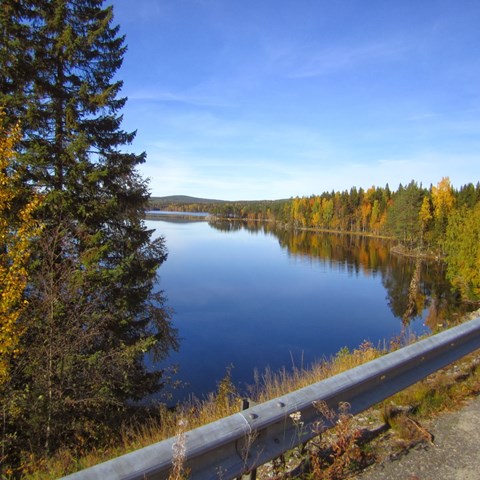Contact
jakob.gustavsson@slu.se, +46 18-67 3045

In a new thesis Jakob Gustavsson has studied the concentrations of flame retardants in Swedish rivers. He has also investigated the best way to analyze flame retardants in natural water samples and how the measurements are affected by other substances in the water.
Flame retardants are added to several everyday products to make them less flammable. The flame retardants can leak from the products and cause harm to nature since they often are toxic and environmentally persistent. Several alternative flame retardants have been developed instead of the harmful and nowadays banned polybrominated diphenyl ethers. Unfortunately, several of the alternative flame retardants have been found to be as hazardous for the environment as the forbidden polybrominated diphenyl ethers.
Jakob Gustavsson from the Department of Aquatic Sciences and Assessment at SLU has in his doctoral project sampled 23 Swedish rives. In each river was at least one flame retardant found and in total 26 different flame retardants were found in the rivers. The concentrations were higher in southern Sweden than in northern Sweden. One specific flame retardant was found for the first time in nature in this study.
In a relatively remote area in northern Sweden (approximately 60 km northwest of the city Umeå) Jakob Gustavsson did study the seasonal changes in the concentrations of flame retardants. The studied area is compared to other areas not as influenced by human activities and thus he concluded that the flame retardants that he found in the water have been transported to the catchment by air. The concentrations of flame retardants were lower than in other areas and this is also due to the relatively small human impact in the area. The highest concentrations were usually highest during the snowmelt period, compared to other times of the year.
Before Jakob Gustavsson did start the measurements of flame retardants in nature did he investigate how to measure flame retardants in natural water samples in the best way. He has found out how the measured concentration of flame retardants are affected when they occur in a natural water sample compared to purely clean water. I a sample from natural river water are the measured concentrations of some flame retardants enhanced while the measured concentrations of other are reduced. The measured concentrations of a third group of flame retardants are not affected by the other substances in the natural water.
When measuring organic pollutants in water samples as much as possible of the pollutant needs to be extracted out of the water sample. Jakob Gustavsson has investigated how this best is made in water samples polluted with several flame retardants. He has also investigated how natural organic carbon, such as humic substances, do affect the extraction of flame retardants.
jakob.gustavsson@slu.se, +46 18-67 3045
Jakob Gustavsson will defend his thesis Tursday 23rd November 9:00 am in "Loftets hörsal". More information about the dissertation and a link to the thesis is found here.